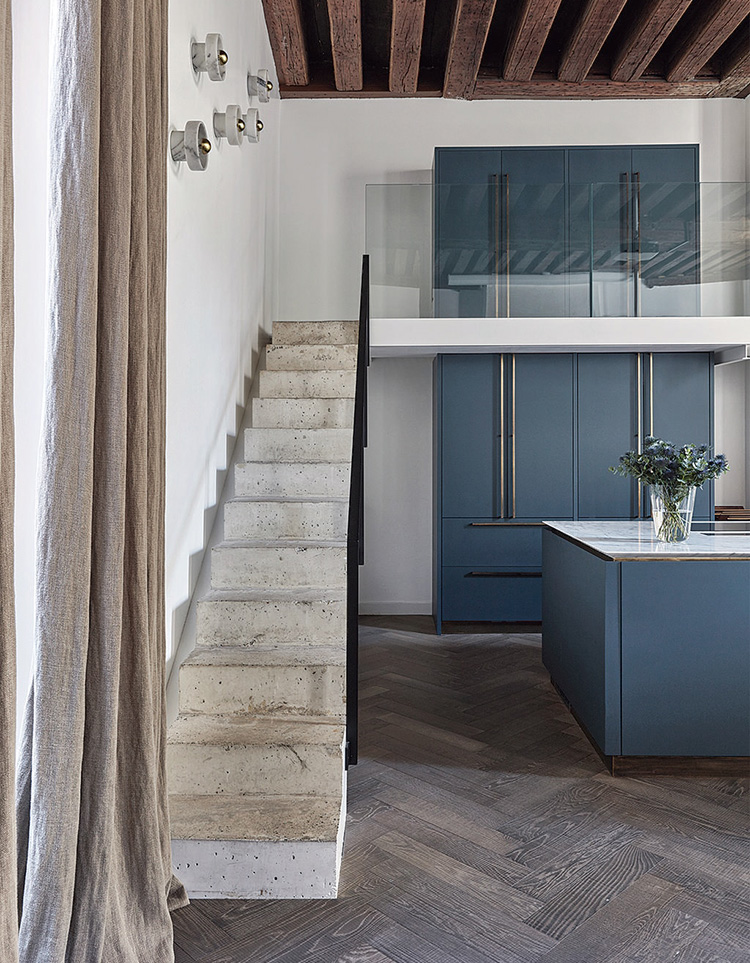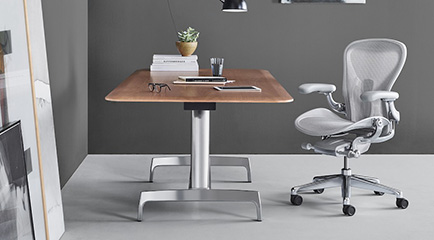
In the royal heart of Right Bank Paris, where imperious buildings betray the first arrondissement’s history of housing courtesans and kings, Émilie Briand and Guillaume Multrier found their fantasy home. It’s secreted inside one of the city’s oldest hôtel particuliers, in a coveted village pocket, on the site of the ancient Porte Montmartre — a gate once punching into a five-kilometre stretch of fortress wall built by King Philippe Auguste (1165–1223) to protect Paris from Anglo-Norman invasion. The property came to them through Antonia Rivoire Immobilier, an agent whose unique collection and clientele are captured on the company’s website with a quote from French philosopher Gaston Bachelard: “The home, more than the landscape, is the domain of the soul.”
Rivoire speaks to an educated elite but just as deftly addresses the Fintech 500 who can flick through her Instagram feed and find such extraordinary private places as were hashtagged with the sell: #architecture #atmosphere #cosi #wood #centreparis #highceilings. Clearly, the buy-in to such monument historique, dating back to 1610, came with strict heritage controls, but Multrier, a master of mining new possibilities from old orders, saw no obstacle in attempting its refresh. As a digital pioneer who has disrupted the publishing world with the internet platform Webedia and unleashed like-havoc on the hotel industry with properties attuned to a special experience, the entrepreneur was primed for any challenge. So was his partner Briand, an executive coach who has aided Multrier in matching special hotel experiences to a calibre of staff who can both deliver and delight in it.


Theirs is an axiom-flipping view of service; one that Multrier encapsulates with the rhetorical question: “do we build souvenirs (memories) while sleeping?” He believes that guests should “own the day” in a hotel stay and has ‘activated’ properties around the precepts of partying, healing and nature. The couple do it so well that you have to ask if their insights into hospitality have informed their new home. “This is a good question, but you need to reverse the intention,” replies Briand. “What we want in a home — the level of comfort, the colours, the functionality, the style — drives what we imagine and set in a hotel for our customers.”
Sincerity, she suggests, is the cornerstone of both her and Multrier’s style. “We are not paying attention to luxury, but to authenticity put into materials, intentions, attitude, generosity.” That answer is visibly embedded in every surface of a multi-storied home that brokers a beautiful détente between the machine age, the internet era, the idiom of Henry IV — visible in the architectural rigour of nearby Place des Vosges — and the energy of four children (two teenagers and two youngsters across two families).
The challenge for Dinard-based architect Christophe Bachmann and Belgian interior designer Nancy Geernaert, both former collaborators with Multrier and Briand on hospitality projects, was to optimise the extravagant ceiling height while serving the comings and goings of a hyper-busy family. Bachmann worked around the tight heritage conditions that precluded alterations to the existing structure and conceptualised the kitchen as units of working furniture. Ébeniste (cabinet-maker) Clément Goudet of Atelier Monts et Merveilles — a woodworker classed by the French press as haute couture — hand-crafted Bachmann’s design for a marble-top island bench that bleeds into the surface of a timber dining table, matching its bulk to a wall-bound bank of appliance-concealing cupboards. This imposing unit, awash in Prussian blue, climbs to almost the full height of the five-metre ceiling, and stands in sentinel silence until day’s end when the doors fling open and the buzz of dinner begins.
Bachmann contrived access to the tall cupboard’s upper limits with a new mezzanine level and a minimally cast concrete staircase, creating more space, more storage and a sculptural frisson. “This is the place where we are together at the end of the week,” says Briand of the communal area that spills onto a generous garden terrace (the Holy Grail in Paris), designed by landscape architect Christine Bayle.


“Guillaume and I love to buy fresh vegetables, fruits, herbs and cook together and chat about the day’s highlights. These are our precious moments, and we are happy to see the children play close to us while we cook.” Working the same storage magic in the master bedroom, Bachmann balanced the room’s light-absorbing midnight walls with closet-concealing oxidised-brass doors by Acier Design Creation that glow to celestial effect. Geernaert was similarly mindful of producing a palpable atmosphere and cast her signature Flemish hand across a feast of modern French design — from Le Corbusier to the Bouroullec Brothers — cohering all with velvety textures in Vermeer tones.
She specified a neutral Belgian linen for drapes, now pooling on a smoked oak parquetry floor, and counterpointed their sobriety with idiosyncratic light sources that sparkle like jewels. “She is very good with lights,” says Briand of rooms that fill every night with real and representational shadows from the past. Memories may not build in sleep for Multrier and Briand, but they layer with a depth in a resonant design that distils more Bachelard wisdom: “One must always maintain one’s connection to the past, and yet ceaselessly pull away from it.”


















